
Simulate changes in moth population due to pollution and predation, and observe how species can change over time.
- Subject:
- Life Science
- Material Type:
- Interactive
- Simulation
- Provider:
- Biology Corner
- Date Added:
- 03/20/2018

Simulate changes in moth population due to pollution and predation, and observe how species can change over time.
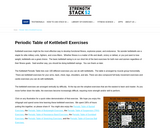
This resource provides a bank of exercises for students to choose and work with. The exercises are categorized by target area and level of difficulty. Included in the resource is video footage of how to execute the exercise, serving as a visual learning tool for the learner. Additional options exist with this resource, including body weight exercises, TRX exercises, and dumbbell exercises.
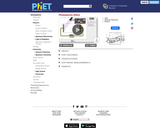
See how light knocks electrons off a metal target, and recreate the experiment that spawned the field of quantum mechanics.
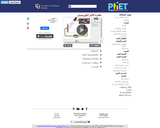
See how light knocks electrons off a metal target, and recreate the experiment that spawned the field of quantum mechanics.

This is a combination of a worksheet and interactive activity for students to either be introduced to photosynthesis and cellular respiration, or it can be a review activity. Students take 9 pieces of paper (for which they write the different parts of the chemical equation of photosynthesis/cellular respiration) to construct the equations for both processes. This is to help them see that the processes are the "opposite" of each other. While following along on the worksheet, students manipulate the pieces of paper according to the instructions and then answer questions on the worksheet.
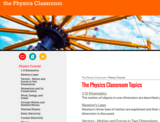
Physics Classroom is intended for beginning physics/physical science students of all ages and their teachers. It offers a tutorial, interactives, concept builders, Shockwave studios, multimedia studios, and much more. This free web-site contains lessons, interactives, simulations, photo galleries, laboratory exercises, and the option to purchase additional assessment materials/ and for educators.
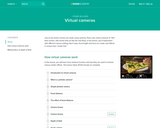
Pixar in a Box - Virtual Cameras is an engaging activity to assist students as young as grade 5 to explore how light and lenses in cameras work. The lesson also focuses on ratios. The following are the standards covered in this lesson:
Math: CCSS.MATH.CONTENT.6.RP.A.3
Science: MS-PS4-2 Develop and use a model to describe that waves are reflected, absorbed, or transmitted through various materials.
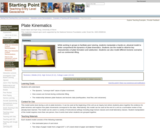
While working in groups to facilitate peer tutoring, students manipulate a hands-on, physical model to better comprehend the dynamics of plate kinematics.
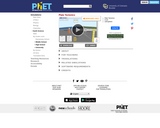
Explore how plates move on the surface of the earth. Change temperature, composition, and thickness of plates. Discover how to create new mountains, volcanoes, or oceans!
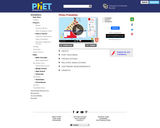
The students will play a classic game from a popular show. Through this they will see the probabilty that the ball will land each of the numbers with more accurate results coming from repeated testing.

PlopIt allows users to build dot plots of data using the mouse. View how the mean, median, and mode change as entries are added to the plot. Parameters: Range for observations.
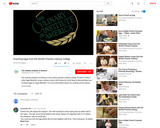
"The Culinary Institute of America is the world's premier culinary college. As part 2 of the 3 video Eggs Benedict recipe, culinary school chef instructor Scott Swartz demonstrates how to poach eggs for Eggs Benedict."
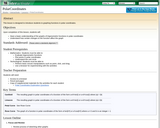
This lesson is designed to introduce students to graphing functions in polar coordinates.
Upon completion of this lesson, students will:
Have a basic understanding of the graphs of trigonometric functions in polar coordinatesUnderstand how certain changes to the function affect the graph
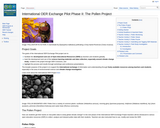
The goals of the International OER Exchange Pilot project are to: facilitate the development and use of Open Educational Resources (OER) by teachers and students globally, track the development and use of the science learning materials and data collection, especially around climate change study, created in the project through OER Commons, and highlight the process and results through workshops and conference presentations.The broader purpose of the project is to support the international exchange of information and understanding through freely available resources among teachers and students, especially in the area of environmental science and climate change investigation.
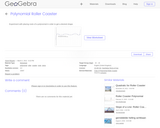
Experiment with placing roots of a polynomial in order to get a desired shape. The desired shape will be a unique format for a roller coaster. The activity is intended to show the relationship among polynomials, curves, and a very common application.

Drag the points to change the graph of the polynomial and watch the derivative change accordingly. Nice choices will let the graph of the derivative stay within the given window.
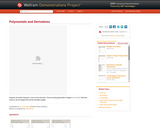
Drag the red marker along the x axis to move the point. Choose among polynomials of degree 2, 3, 4, or 5. Check the boxes to see the tangent line and the derivative graphs.
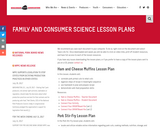
The Wisconsin Pork Association posts and provides lesson plans relavent to teaching about pork. The website and lesson plans provide information about standards, objectives, skills, as well as teacher and student resouces.
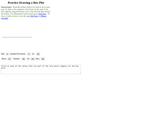
Students can use this module to create/draw box plots given specific information (i.e., five number summary, mean, and standard deviation).

This resource shows the interaction between the Canadian lynx (a predator) and the snowshoe hare (prey). This simulation lets you observe changes in hypothetical populations of lynx and hares over multiple generations to demonstrate the interconnectedness of the two species in an ecosystem.